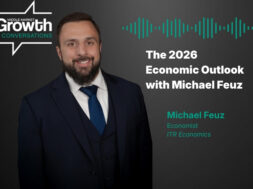Looking Inward: Boosting Value in a Tough Exit Environment
How private equity sponsors are maximizing value creation at portfolio companies in a limited exit environment

How do you extract the maximum value from private equity investments when traditional exit routes are all but nonexistent? That’s the question that the private equity industry has been struggling with in a high interest rate environment that has made mergers and acquisitions few and far between. For most middle-market PE firms, the answer has been to make the most of what they’ve got by dedicating their time and attention to boosting the value of portfolio companies.
Value creation has become a priority for the private equity industry, but there are significant differences in the way that individual firms approach such efforts.
While cost cutting and personnel changes have long been go-to methods for boosting profits, many PE firms are shifting their focus to other areas, such as bolstering sales and marketing, overhauling supply chains, reassessing customer bases and even embracing artificial intelligence to enhance performance.
“In general, there’s a lot more emphasis in terms of value creation plans, and it’s much more a part of Day One or even pre-investment discussions,” says Jeffrey Stevenson, a managing partner at lower middle-market investment firm VSS Capital Partners.
Adds Richard Bange, a partner at law firm Holland & Knight: “Over the past 18 months, when there are not as many new platform investments being made, a lot of firms are looking inward in terms of how to create value for their portfolio companies and how to enhance them.”
The Competitive Landscape
Boosting the value of portfolio companies to extract maximum gain has always been private equity’s goal, but it has become even more important amid heightened competition. “For middle-market private equity as an asset class, there’s been more and more funds raising larger amounts of capital, and it’s more competitive. So, groups have had to find ways to differentiate around the most attractive assets,” says Gene Bitonti, a founding member and managing director at Woodward Park Partners, a new middle-market investment bank launched by a team of executives from TD Cowen.
Since valuations in many processes converge, Bitonti says efforts to differentiate portfolio companies become even more important. “The question becomes ‘What else do you bring to the table?’” he says, noting that this is equally important to the buy-side and the sell-side.
Operating partners also need to tailor their value-creation approach based on the size of companies they pursue, says Casey Myers, a partner at growth-stage investment firm Edison Partners. Myers recalls working at multiple lower middle-market software companies, where he says operating partners were experienced in running much larger businesses. “Their idea of value creation did not resonate with a lower mid-market operator,” says Myers. He believes that too many firms lack intentional measurement around value creation, noting that typical playbooks involve little more than financial planning and analysis, pricing optimization and access to recruiters for talent replacement. “Those things alone will absolutely work at a $250 million to $500 million company. But they just don’t cut it as you go down market, where you need to create a personalized approach,” states Myers. He says Edison’s approach to value creation is “people first” and includes functional operating partners versus generalists; an extensive director network of experienced CEOs and board members who can provide specialized support to portfolio companies; and a personalized content and community strategy to facilitate peer-based learning.
Erin DeRuggiero, the founder and former CEO of TI Health, a healthcare predictive analytics company, agrees that strategic financial guidance from investors is key. Her firm received backing from Star Mountain Capital and was acquired by New Mountain-backed Real Chemistry & Swoop, a healthcare advertising company, in March 2023.
“Private equity was pivotal in helping us to hire and make smarter investment decisions—focusing on the metrics that future acquirers would be most focused on. As a founder CEO running a business, I was more focused on product and go-to-market, so this input from PE was extremely valuable,” says DeRuggiero, now the founder of Short Sherpa Ventures. “[Star Mountain] had a playbook that was pretty enticing because they had been there, done it before. They approach companies like mine as if it’s an HGTV show where you’re like, ‘This house has good bones, we just need to replace some of the drywall, and we’re going to put in a sexy vaulted ceiling so that it’s going to sell for 15x what we bought it for.’”
During the five years between Star Mountain’s acquisition of TI Health in 2018 and the company’s acquisition by the New Mountain portfolio company, DeRuggiero says the firm spent the time determining what PE firms would be interested in at exit and ensuring that the business was structured to hit all the necessary milestones. Some of those milestones included additional investment and focus on increasing automation, building out the data insights platform, offshoring some of the company’s manual reporting tasks and focusing more broadly on recurring revenue and a strong direct-to-pharma customer base.
Effective Value Creation Strategies
Although approaches to value creation differ across sponsors and vary by company size, there are several strategies that private equity firms regularly employ with their businesses. They include:
Adding on and Using Scale: One way that PE firms have been seeking to boost value is through add-ons, where they purchase smaller companies to round out the services or product offerings of portfolio companies. It’s an area that Holland & Knight’s Bange says has kept his firm extremely busy over the past year and a half. Simply adding to an organization’s size or offerings, however, is not enough; the ability to provide strong guidance to portfolio companies remains essential.
“Another resource is operating partners who will work with management teams to create operational efficiencies, create value and really get under the hood and come up with ways to help improve the business,” says Bange. That might include leveraging a PE firm’s size and scale to provide portfolio companies with resources and better terms for insurance and other services.
Sifting through Supply Chains: Wade Aust, a managing director and partner at investment bank Alantra, notes that many firms are paying particularly close attention to managing the costs of supply chains. “Supply chain management is a lot more difficult today than it was five or 10 years ago. I’ve seen several groups that are owned by corporates and large private equity firms that have really spent a significant amount of time over the last couple of years developing systems so that they can actually understand their costs and use that in managing the supply chain,” says Aust, who focuses primarily on the industrial segment. “We have seen private equity really step up their efforts in many industries—in manufacturing, particularly around aerospace and defense, and around industrial services.”
Fine-Tuning Personnel: Headcount is another place where many firms dig in within portfolio companies, looking to trim whenever possible. In addition to cutting unnecessary positions, PE firms are exploring new ways to enhance productivity. “PE firms are looking to see if there are positions that can be optimized through artificial intelligence. And they are increasingly looking at outsourcing some of the commodity-type functions, such as call center or billing functions,” says Mike Okaty, a partner at law firm Foley & Lardner.
“PE firms are looking to see if there are positions that can be optimized through artificial intelligence (AI). And they are increasingly looking at outsourcing some of the commodity-type functions, such as call center or billing functions.”
Mike Okaty
Foley & Lardner
Leadership and management teams are also dominating PE firms’ attention as they seek to enact major change within portfolio companies to boost value—notably by installing experienced people who can address areas that are underperforming. “It’s one thing for a private equity person to say, ‘Okay, here’s the value creation plan, go execute it.’ But it’s another for the management team to actually be able to do that. That’s where the rubber meets the road,” says VSS’ Stevenson.
PE firms often hire new CFOs to round out the management team by bringing on professionals who can translate financial information to needed upgrades or changes within a business. Meanwhile, smaller organizations often lack chief operating officers, an indication that sales and management functions have not been adequately supported.
Tapping into AI: Technology upgrades, particularly via artificial intelligence, has become a vital tool for driving value in a slower deal environment. According to Ken Gavrity, head of commercial banking at Key Commercial Bank, “44% of middle-market companies have already dipped their toes into the AI waters in some form or fashion.” He says that includes incorporating AI into things like contact centers, training, and capabilities around sales and trade. “They’re finding all these ways to continue to get operationally more resilient, more productive and to get margin improvement because the M&A isn’t there,” says Gavrity. He adds that payments automation is another source of economic benefit for middle-market companies, which have been slow to digitize this function—40% of payments in the middle market are still made by check.
Cutting Real Estate: Real estate is another area firms are digging into, with commercial office space use having heavily declined in the wake of hybrid work arrangements. In some cases, that may mean reducing a company’s real estate footprint by embracing arrangements like hoteling and shared workspaces, or simply moving to cheaper and smaller office spaces. “Value creation produces more revenues, while other value creation reduces expenses to get more efficiency and increase profit margins over time. Most people are focused on both, as there’s a saying that ‘you can’t cut yourself into profitability,’” says Foley’s Okaty.
The Waiting Game
While the focus on value creation has dominated the private equity game for the past year or two, investors are hopeful that M&A activity will ramp up soon. So far, however, exit activity has been slower than anticipated in the first half of 2024. According to PitchBook data presented at ACG’s DealMAX conference in April, exit value is at a decade low, with $79.2 billion in exits reported in the first quarter, $279.1 billion in 2023 and $293.3 billion in 2022—down from a record high of $831.7 billion in 2021.
As limited partners step up pressure on PE firms to finally return some cash, many GPs are struggling to decide on the right time to exit portfolio companies they have already held onto longer than intended. “In 2023, for the first time in eight or nine years, the median hold period for investments crossed six years and was around six and a half years,” says John Signa, CEO and founder of advisory firm E78 Partners.
But sponsors aren’t willing to exit at any cost. “They’re going to wait until they can at least make a reasonable return,” says Woodward Park’s Bitonti, who notes that most groups have enough flexibility in their structures that they won’t be forced to sell assets in disadvantageous scenarios. Until then, value creation will remain the name of the game.
Britt Erica Tunick is an award-winning journalist with extensive experience writing about the financial industry and alternative investing.
Middle Market Growth is produced by the Association for Corporate Growth. To learn more about the organization and how to become a member, visit www.acg.org.


